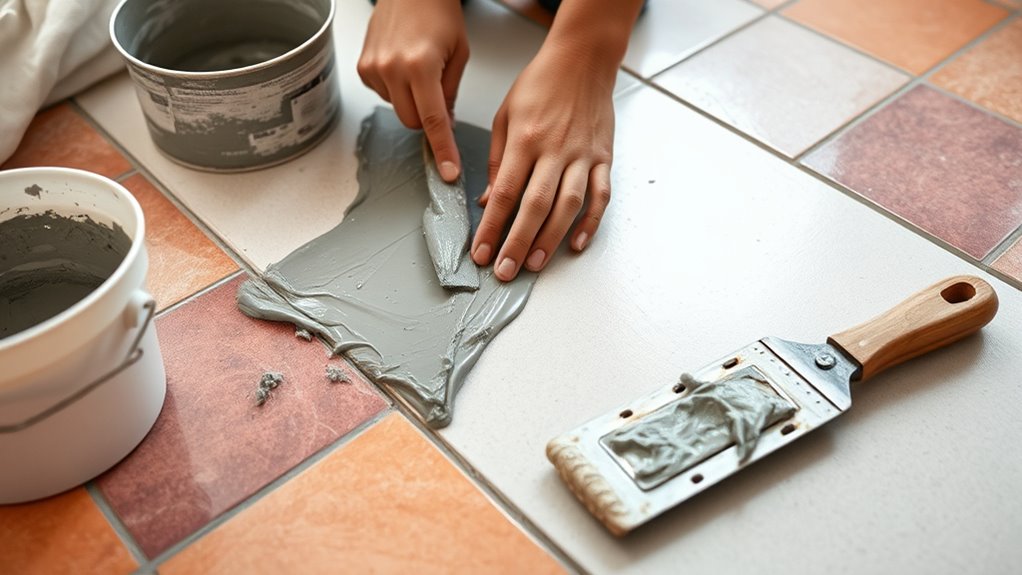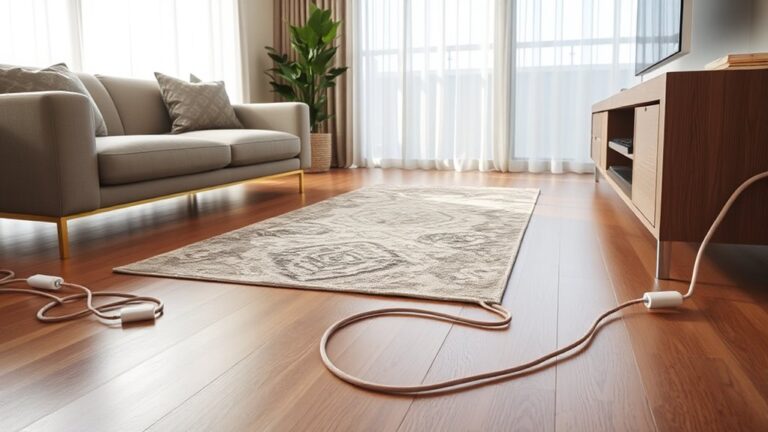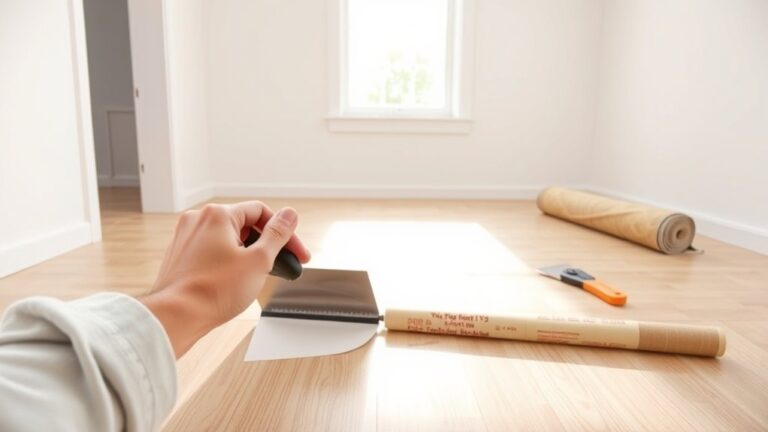To grout a floor in three simple steps, start by thoroughly cleaning and drying the tile surface, removing all dust and debris for proper adhesion. Next, mix grout to a thick but spreadable consistency, then use a rubber float held at a 45-degree angle to press grout into joints evenly. Finally, wipe away grout haze with a damp sponge and apply a quality sealant to protect grout lines. Understanding these basics sets the foundation for achieving a professional finish.
Preparing the Tile Surface
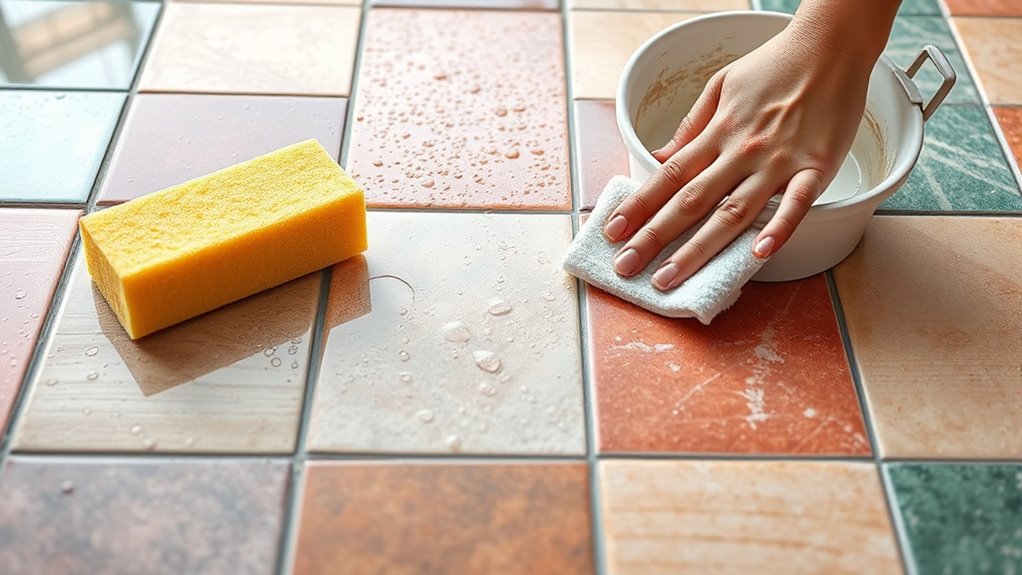
Before you begin grouting, make sure the tile surface is completely clean and dry. Successful tile preparation demands thorough surface cleaning to remove dust, debris, and any residual adhesive. Use a vacuum or broom followed by a damp cloth to eliminate particles. Avoid excess moisture; drying time is critical. Inspect grout joints for gaps or loose tiles, repairing them as needed to guarantee a stable base. Proper tile preparation prevents grout adhesion issues and uneven finishes. Pay close attention to corners and edges where dirt tends to accumulate. By maintaining this disciplined approach to surface cleaning, you secure a flawless foundation for grouting, granting you the freedom to achieve professional results without setbacks or rework. Your meticulous preparation directly influences the durability and appearance of your finished vloer.
Applying the Grout
Once the tile surface is fully prepared, you’ll mix the grout to the manufacturer’s recommended consistency—thick but spreadable. Applying grout requires precision and adherence to proven grout application techniques to guarantee durability and aesthetics. Begin by choosing grout colors that complement your tile and room design, enhancing freedom in style expression. Use a rubber float to:
- Press grout firmly into joints at a 45-degree angle
- Remove excess grout by holding the float almost vertical
- Work in small sections for consistent coverage
- Allow initial setting before smoothing
- Avoid washing grout prematurely to prevent weakening
This method guarantees even grout distribution and strong bonding, giving you a professional finish while embracing your creative freedom.
Cleaning and Sealing the Grout Lines
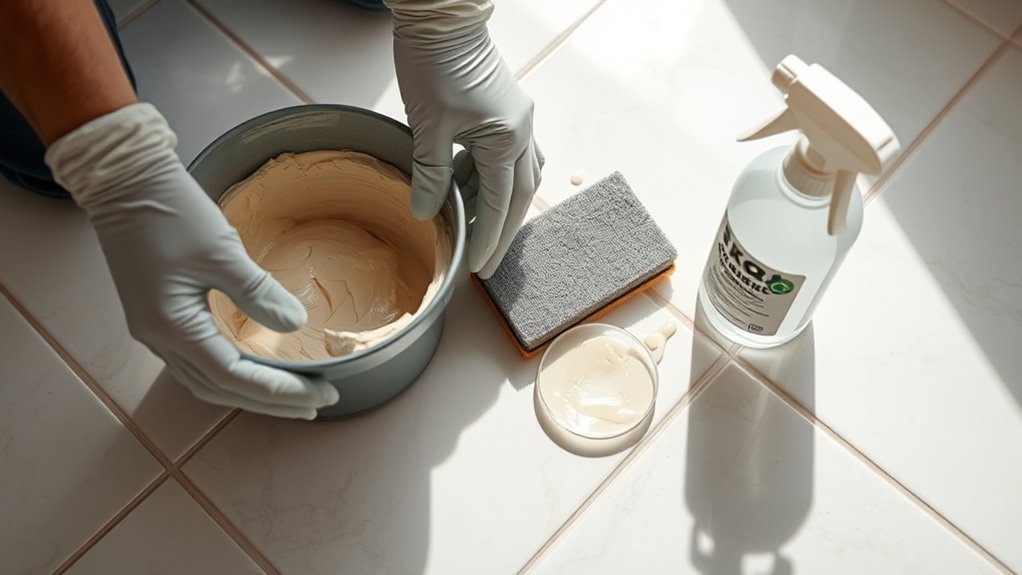
Although applying grout is essential, thorough cleaning and sealing of the grout lines are equally important to guarantee durability and prevent staining. Start by using effective cleaning techniques, such as a damp sponge and a non-abrasive cleaner, to remove grout haze and residue within 10–15 minutes of application. Avoid excessive water, which can weaken the grout. Once dry, choose a high-quality sealing product designed for your grout type. Apply the sealant evenly with a small brush or applicator, ensuring full penetration into the grout lines. Let it cure as per the manufacturer’s instructions to create a protective barrier against moisture and dirt. Proper cleaning and sealing not only preserve your floor’s appearance but also extend its lifespan, giving you freedom from frequent maintenance and costly repairs.

